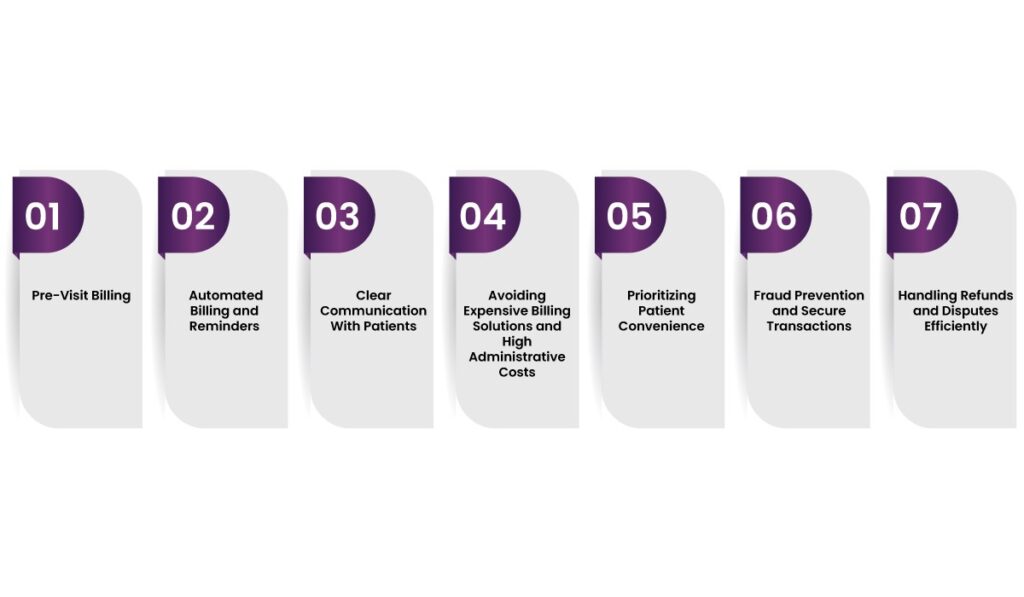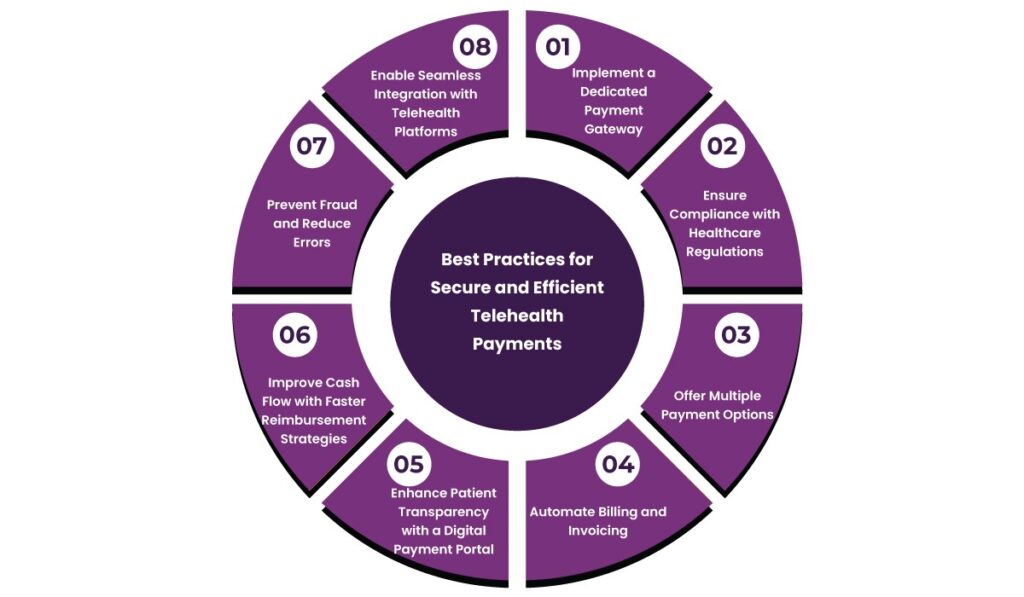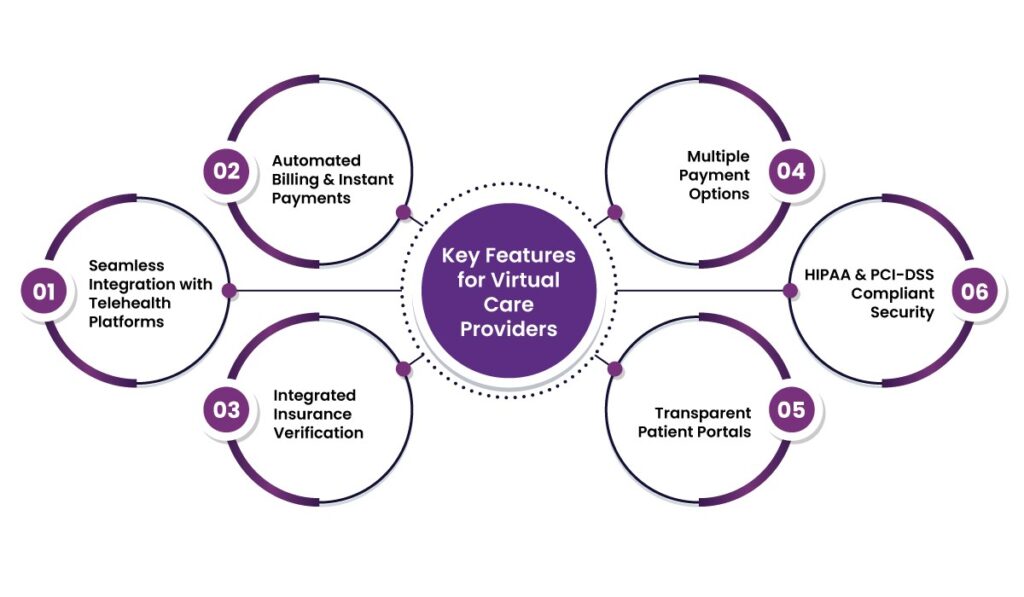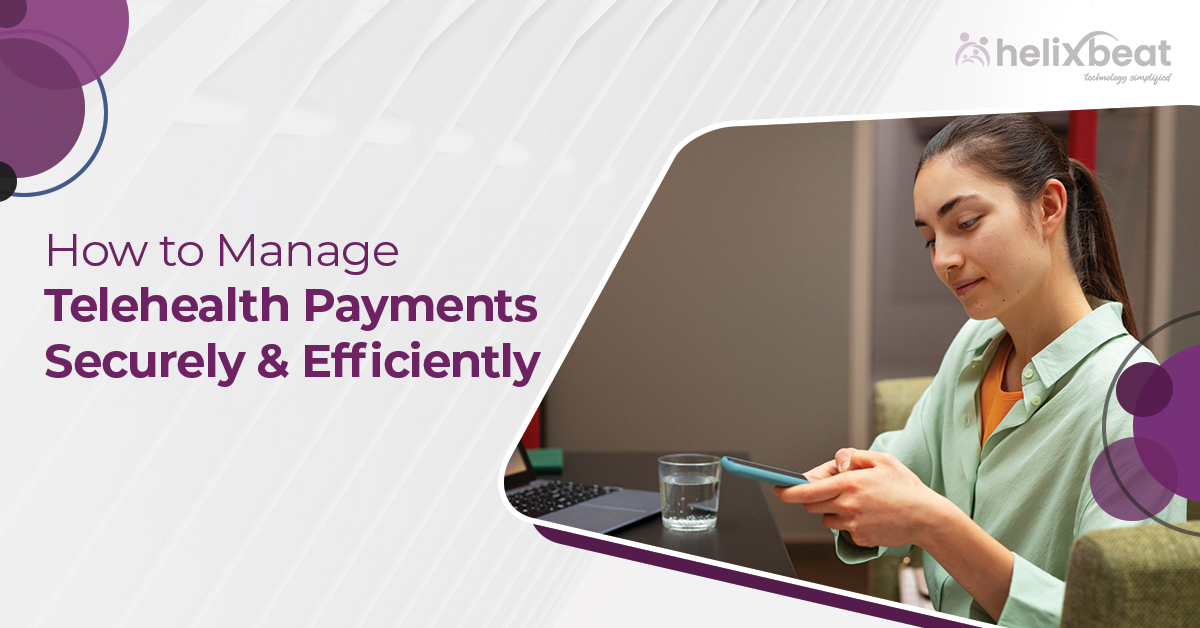Table of Contents
Introduction
A few years ago, seeing a doctor meant sitting in a waiting room, filling out forms, and handing over your insurance card. Now, with a few taps on a screen, people can book virtual appointments and get medical advice without leaving their homes. Telehealth is no longer the future—it’s the present, and it’s growing faster than ever.
2024 and 2028, the telehealth market is expected to grow by $368.7 billion, with a staggering 40.06% annual growth rate (Technavio). More people are choosing virtual care because it’s convenient, especially for those managing chronic illnesses or living in remote areas. But while doctors and patients are adapting to this digital shift, the payment side of telehealth is struggling to keep up.
Unlike in-person visits, where patients pay at the front desk, telehealth payments often get tangled in a web of insurance approvals, billing codes, and digital transactions. Providers are facing delayed reimbursements, higher administrative costs, and frustrated patients who don’t understand how or when to pay. Studies show that inefficient billing can slow down payments by 30%, making it harder for clinics to stay financially stable.
To truly unlock the potential of telehealth, healthcare providers need a smoother, more secure payment process. This guide will break down the best ways to simplify payments—so doctors can focus on patient care, not paperwork, and patients can get the care they need without financial confusion.
Common Challenges in Telehealth Payment Management
1. Pre-Visit Billing
One of the biggest hurdles in telehealth payment processing is collecting payments before a visit. Unlike in-person consultations, where patients pay before or immediately after their appointment, telehealth services often struggle with delayed payments. Pre-visit billing ensures that patients complete their payment obligations upfront, reducing the risk of revenue loss for healthcare providers.
2. Automated Billing and Reminders
Managing payments manually can be time-consuming and prone to errors. Telehealth providers often face difficulties in tracking payments, sending invoices, and following up on outstanding balances. Automated billing solutions help streamline the entire process by:
- Sending automated invoices and reminders.
- Reducing late payments and no-shows.
- Ensuring a steady cash flow for healthcare providers.
3. Clear Communication With Patients
Billing transparency is a critical factor in patient satisfaction. Many patients are confused about telehealth billing, insurance coverage, and out-of-pocket expenses. To address this issue, healthcare providers must:
- Clearly explain the cost of services before an appointment.
- Provide detailed billing statements.
- Offer multiple payment options, including credit cards, digital wallets, and insurance claims.
4. Avoiding Expensive Billing Solutions and High Administrative Costs
Traditional billing systems often involve high administrative costs, requiring extensive paperwork and manual follow-ups. Many healthcare providers struggle to find cost-effective solutions that do not compromise security and compliance. Investing in an efficient, automated billing system helps:
- Reduce administrative overhead.
- Minimize errors and processing delays.
- Optimize financial management.
5. Prioritizing Patient Convenience
Patients today expect a seamless payment experience. Complicated billing processes can result in frustration, delayed payments, and even lost patients. Offering easy payment solutions improves patient satisfaction and increases the likelihood of timely payments. Essential features for patient convenience include:
- Mobile-friendly payment options.
- Secure online payment portals.
- Payment plans and financing options for those unable to pay upfront.
6. Fraud Prevention and Secure Transactions
Telehealth transactions are vulnerable to cybersecurity threats, including payment fraud and data breaches. Implementing secure authentication processes and encrypted transactions is crucial to maintaining trust and protecting patient information.
7. Handling Refunds and Disputes Efficiently
Billing errors, appointment cancellations, or insurance discrepancies often result in refund requests. Managing these disputes efficiently without excessive delays is vital to maintaining patient trust.

Best Practices for Secure and Efficient Telehealth Payments
1. Implement a Dedicated Payment Gateway
A dedicated payment gateway like Paynova acts as the backbone of your telehealth transactions. Think of it as your virtual cashier—handling everything from card payments to insurance verifications, ensuring a smooth experience for both patients and providers.
Why It Matters:
- Security First: A centralized system encrypts transactions, reducing fraud risks.
- Less Admin Work: Automates payment collection, freeing up staff to focus on patient care.
- Insurance Integration: Seamlessly verifies coverage and submits claims.
Example: Imagine a patient books a virtual consultation. Instead of staff manually processing payments, Paynova integrates directly with your telehealth platform. The system auto-verifies insurance, processes co-pays, and logs the transaction—all within minutes. No paperwork, no hassle!
2. Ensure Compliance with Healthcare Regulations
Security and compliance aren’t just buzzwords—they’re the foundation of patient trust. Telehealth providers must adhere to strict regulations to protect sensitive data and avoid hefty fines.
Key Compliance Measures:
- HIPAA Compliance: Encrypts patient health data, ensuring privacy.
- PCI-DSS Compliance: Secures online transactions, preventing fraud.
- GDPR (for international transactions): Adheres to global privacy standards.
Example: A clinic in New York expands telehealth services to Europe. Without GDPR compliance, they could face legal challenges for improper handling of EU patient data. By using a compliant payment gateway, they avoid fines and build patient confidence.
3. Offer Multiple Payment Options
Patients appreciate flexibility—offering multiple payment options can reduce missed payments and improve satisfaction. A one-size-fits-all approach won’t cut it!
Options to Offer:
- Credit/Debit Cards: Standard, but essential.
- Bank Transfers: Ideal for high-value transactions.
- Digital Wallets: Apple Pay, Google Pay, and PayPal provide a seamless experience.
- Recurring Payments: Useful for subscription-based care plans.
- Payment Assistance Programs: Helps uninsured or underinsured patients manage costs.
Example: A patient with chronic migraines needs monthly virtual check-ups. Instead of manually paying each time, they enroll in an automated recurring payment plan—no missed payments, no disruptions in care.
4. Automate Billing and Invoicing
Manual billing is like using a typewriter in a smartphone world—slow, prone to errors, and frustrating. Automation streamlines the entire process, reducing errors and saving time.
Key Features:
- AI-Powered Invoicing: Generates precise invoices based on services rendered.
- EHR & PMS Integration: Syncs payments with patient records.
- Automated Reminders: Sends alerts for due payments, reducing late fees.
Example: A mental health clinic integrates automated invoicing. After each session, an invoice is generated, insurance is billed, and patients receive a payment reminder—no manual entry required!
5. Enhance Patient Transparency with a Digital Payment Portal
Nobody likes surprise medical bills. A user-friendly payment portal gives patients control and visibility over their finances.
Benefits:
- Itemized Billing: Patients see exactly what they’re paying for.
- Auto-Pay Setup: Reduces missed payments.
- Insurance Claim Tracking: Patients stay informed about claim approvals.
Example: A busy professional forgets to pay their bill. Instead of facing late fees, they log into their portal, view their balance, and set up autopay—crisis averted.
6. Improve Cash Flow with Faster Reimbursement Strategies
Delayed payments can put financial strain on healthcare providers. The faster you get reimbursed, the healthier your business.
Strategies for Speed:
- Real-Time Claim Submission: Reduces processing delays.
- Automated Insurance Verification: Ensures coverage before consultations.
- Recurring Payments for Long-Term Care: Ensures steady revenue.
Example: A pediatric telehealth service integrates automated claims processing. Instead of waiting weeks for insurance reimbursement, claims are submitted and approved in real-time, improving cash flow.
7. Prevent Fraud and Reduce Errors
Financial fraud in healthcare is real—identity theft, chargebacks, and fraudulent claims can disrupt operations. A secure payment system safeguards against these risks.
Must-Have Security Features:
- Multi-Factor Authentication: Adds an extra layer of security.
- AI-Based Fraud Detection: Identifies suspicious transactions.
- Tokenization & Encryption: Protects sensitive financial data.
Example: A clinic experiences fraudulent chargebacks. After implementing AI-driven fraud detection, the system flags unusual activity, preventing future losses.
8. Enable Seamless Integration with Telehealth Platforms
A payment system should work with your telehealth platform, not against it. Frictionless integration improves efficiency and patient experience.
Integration Features:
- Real-Time Eligibility Checks: Confirms insurance before appointments.
- Automatic Invoicing: Sends bills immediately after consultations.
- Secure Digital Payments: Patients can pay within the telehealth app.
Example: A virtual dermatology clinic integrates a payment gateway. After each consultation, the system auto-generates an invoice, processes payment, and updates patient records—all in real-time.

Managing Telemedicine Payments Securely and Efficiently with Paynova
Telemedicine is transforming healthcare, making it easier for patients to consult doctors from anywhere. However, managing payments in a virtual care setting comes with its own set of challenges—insurance verification, delayed reimbursements, and secure transactions. That’s where Paynova simplifies the process.
For telehealth providers and clinics, Paynova ensures fast and secure payments, automating everything from patient copays to insurance claims. No more chasing payments or dealing with complex billing codes—just seamless transactions integrated into your telemedicine platform.
Hospitals and large healthcare organizations handling thousands of virtual consultations daily benefit from real-time claim processing, reducing delays and improving cash flow. Whether it’s an urgent care visit or chronic disease management, Paynova helps eliminate financial bottlenecks.
For patients and caregivers, the system provides flexible payment options—credit cards, digital wallets, and automated recurring payments—making virtual healthcare more accessible. A transparent billing portal allows users to track expenses, preventing confusion over medical bills.
Key Features for Virtual Care Providers
- Seamless Integration with Telehealth Platforms – Paynova integrates directly with telemedicine apps and EHR systems, ensuring a smooth billing and payment process.
- Automated Billing & Instant Payments – No more manual invoicing; Paynova automates transactions, reducing delays and improving cash flow.
- Integrated Insurance Verification – The system checks patient eligibility in real-time, preventing claim rejections and unexpected out-of-pocket costs.
- Multiple Payment Options – Patients can pay via credit/debit cards, digital wallets (Apple Pay, Google Pay), bank transfers, or recurring payments for ongoing care.
- Transparent Patient Portals – A user-friendly dashboard lets patients view bills, track payments, and set up auto-pay, eliminating confusion.
- HIPAA & PCI-DSS Compliant Security – Ensures data encryption, fraud detection, and multi-factor authentication, keeping patient information safe.

For telehealth providers, hospitals, and digital health startups, Paynova simplifies financial operations, allowing them to focus on delivering quality virtual care without payment headaches.
Streamline your telehealth billing with PayNova
Optimizing telehealth billing offers the benefits of faster payments, reduced administrative burden, and better patient satisfaction. The potential for quicker cash flow, decreased workload for administrative staff, and increased patient satisfaction make this a crucial area for optimization.
Explore how payNova can help your practice get paid faster while improving your patients’ experience—schedule a demo today!
Customer also ask
1. What is telehealth billing?
Telehealth billing is the process of charging patients for virtual medical visits. It includes verifying insurance, submitting claims, and processing payments through online systems.
2. Why do telehealth payments take longer than in-person payments?
Unlike in-person visits, where patients can pay at the front desk, telehealth payments require insurance approvals, billing codes, and digital transactions, which can slow down the process.
3. How can I make telehealth payments faster?
You can speed up payments by using automated billing, pre-visit payments, and integrated payment gateways that verify insurance and process transactions instantly.
4. What are the best ways to secure telehealth payments?
Secure telehealth payments by using encrypted transactions, multi-factor authentication, and fraud detection systems to protect patient information.
5. Can patients pay for telehealth visits with digital wallets?
Yes! Many telehealth platforms accept payments via Apple Pay, Google Pay, PayPal, credit/debit cards, and bank transfers for convenience.
6. What happens if a patient needs a refund for a telehealth visit?
Refunds can be processed through the billing system, but policies depend on the provider and insurance company. Clear refund policies help avoid disputes.
7. How can healthcare providers reduce billing errors in telehealth?
Automating invoicing, integrating electronic health records (EHR), and using AI-powered billing systems can help reduce mistakes and speed up payment processing.
8. Do insurance companies cover telehealth visits?
Many insurance plans cover telehealth visits, but coverage depends on the provider and state laws. Patients should check with their insurance company before booking an appointment.














